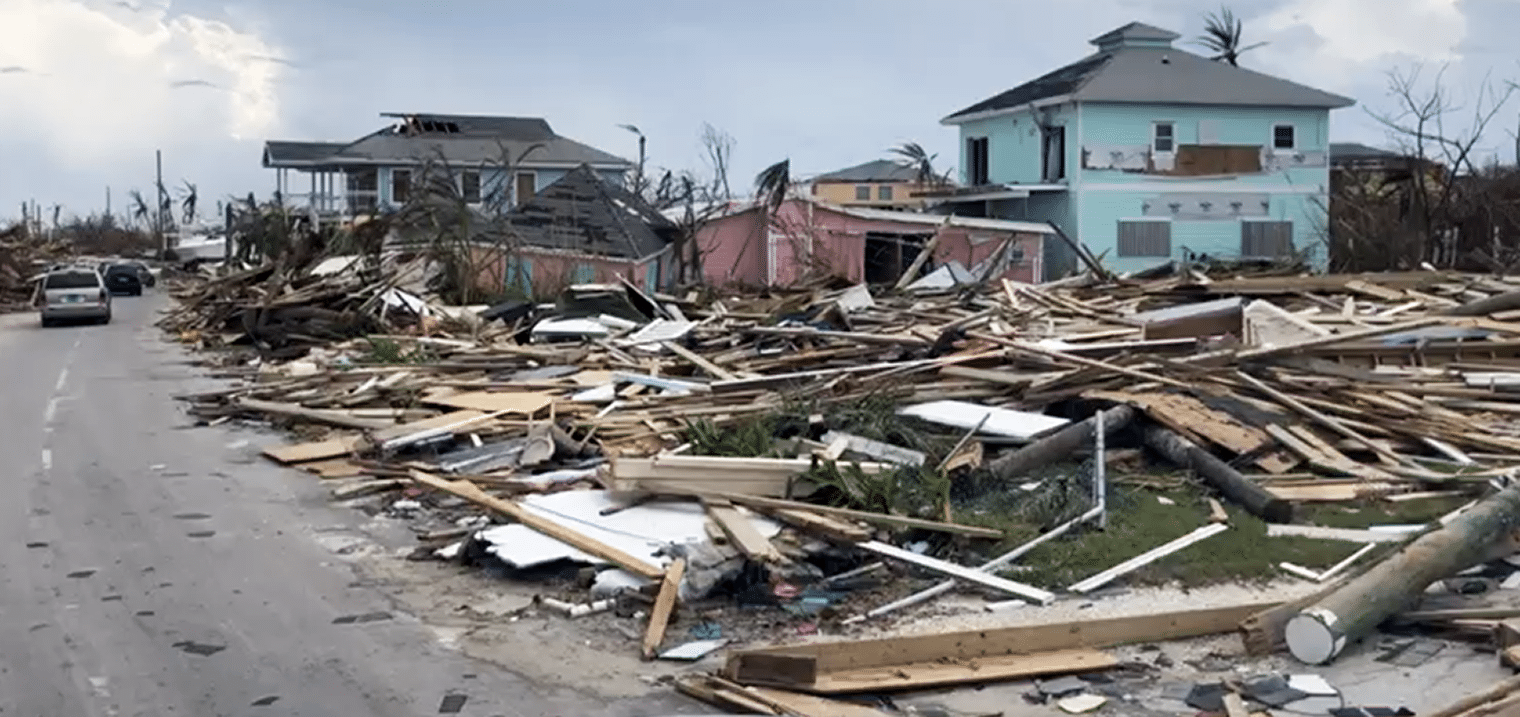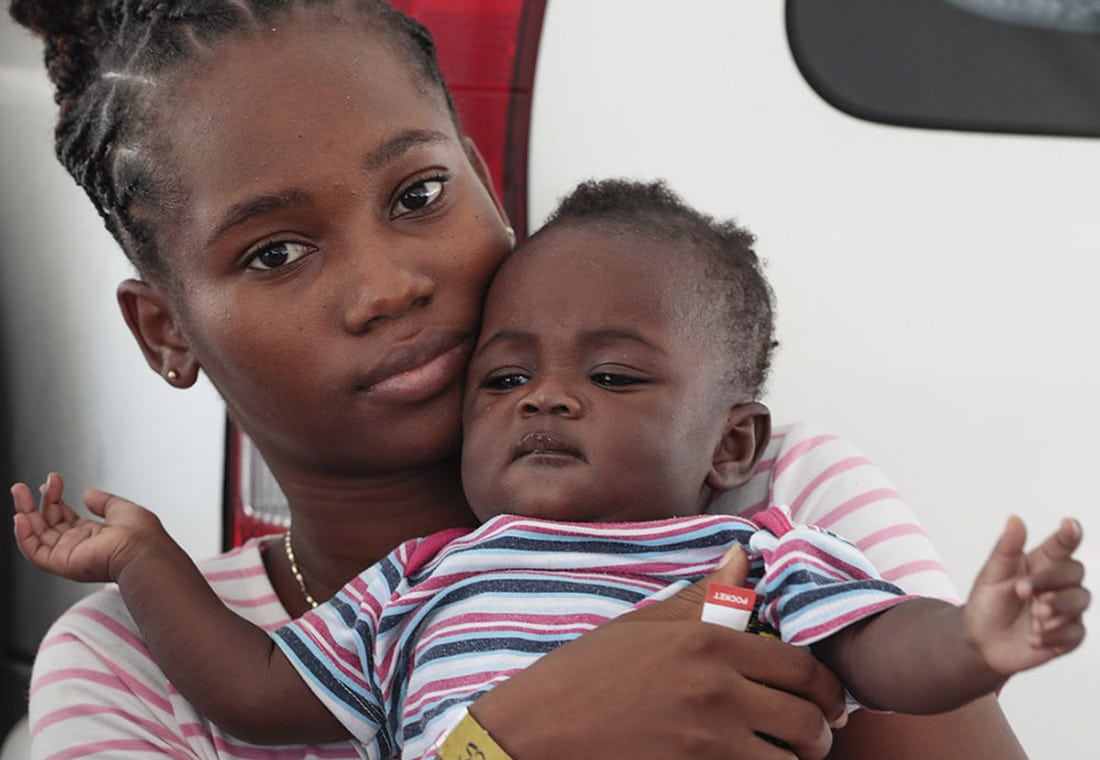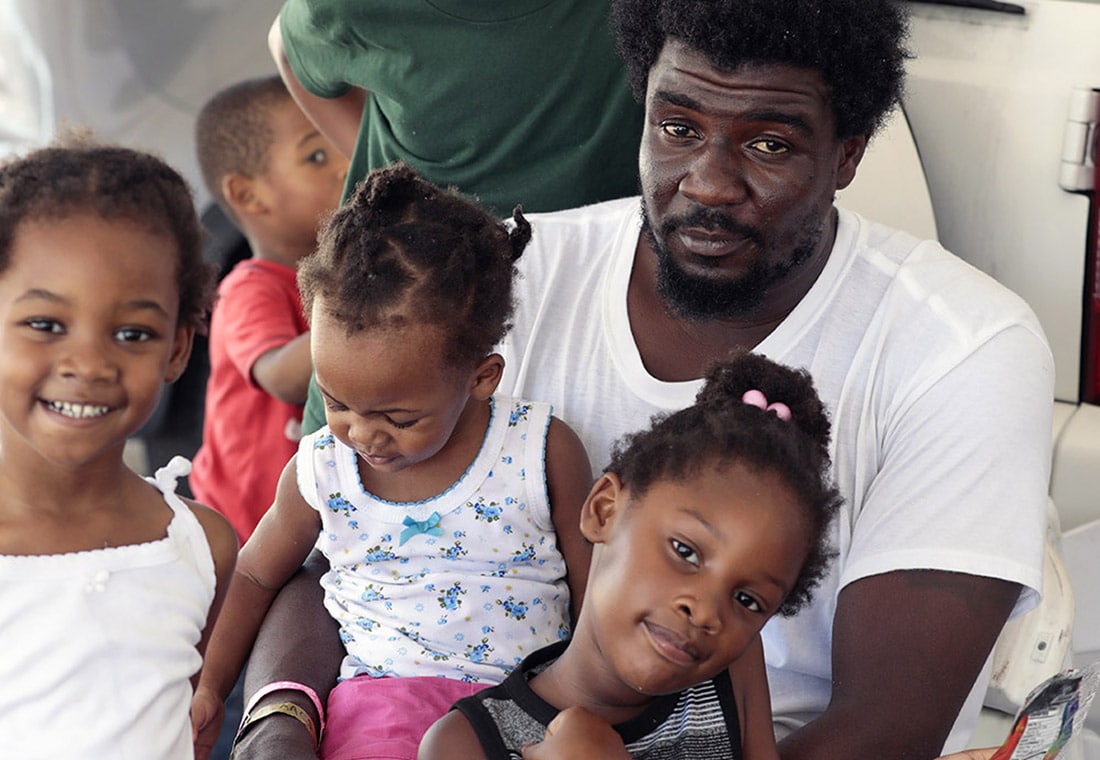
Families Have Lost Everything: Complete Devastation on Abaco Island
As the catastrophic damage in the Bahamas becomes clear, Project HOPE is on the ground helping meet people’s urgent needs.
Two months ago, Kimberly Samuel moved into her new home on Great Abaco Island in the northernmost part of the Bahamas. A few weeks after Samuel moved in, a tropical wave blew off the coast of Senegal, more than 6,000 miles away. As the system made its way across the ocean, an eye 12 miles wide began to form in its center. Rain bands wrapped around its nucleus. Soon the storm was given a name, Dorian, and began to draw strength from warm Caribbean waters with almost incomprehensible speed. On August 30, Dorian was a Category 2 hurricane; two days later, it tied the record for the strongest storm ever recorded in the Atlantic.
On September 1, the day Hurricane Dorian’s sustained winds peaked at 185 miles per hour, it settled over Kimberly Samuel’s home and parked itself. For 48 hours, Dorian punished the Abaco Islands with the strongest winds to ever hit the Bahamas. The wave that had blown off the coast of Africa had become a monster outside her door, raging up to 220 miles per hour and moving at the speed of a crawl.
While many in Abaco evacuated, not everyone was able to. Now, like everyone else standing amid the island’s ruins, she struggles to even comprehend what she just experienced.
“There’s not much I can say, because everything is gone. I just moved in my house two months ago and it’s gone.”


The devastation is complete
As the scope of the damage on Abaco and Grand Bahama Island comes into focus, the question is not when life will get back to normal, but instead what normal has become. There is nothing right now to rebuild; entire swaths of the islands are gone and show Dorian’s wrath: homes turned inside out, entire neighborhoods blown away, the trademark Caribbean blue replaced with a flat brown. It’s not possible to tell where your damage ends and your neighbor’s begins.
At the airport, where Samuel waits among a crowd of people trying to find some way off the island, a single generator charges cell phones that have no service. There is no way to find out what planes might be coming. Those left behind shuffle between the airport, hospital and government office for shelter — all of which are completely overwhelmed. The only thing to do now, Samuel says, is “get people off the island.”

Project HOPE was one of the first groups to land in the Bahamas and quickly set up an emergency response base in Nassau. Tom Cotter, Project HOPE’s director of emergency response, visited Abaco to assess damage and meet with medical personnel. The needs are overwhelming, he says, especially for those packed into the hospital, which is doing its best to keep up with an unending level of trauma.
“The devastation is pretty complete,” Cotter says. “It’s hard to get around and power lines are down everywhere. This is a dire situation. I’m eager to get back to land and start sending medicines this way.”
The Bahamas have strict building codes that require homes to withstand winds up to 180 miles per hour. But many in Abaco live outside those regulations, including the Haitian immigrant community that calls the island home. Dorian’s danger was clear in the days before landfall, but evacuation for many communities was not an option.
In the brief peace when the eye passed overhead, crowds of people left their shattered homes to rush to shelter in government buildings before the storm returned. Thousands of people are unaccounted for, and government officials have warned the death toll could be “staggering.”
“I haven’t seen destruction like this in quite some time. It’s breathtaking.”

An eye on rebuilding
The day Dorian made landfall, recovery was already in sight. A local organization immediately formed called Restoration Abaco, “born of tragedy” and committed to the relief and recovery of their own people. Project HOPE has partnered with Restoration Abaco to distribute the first emergency supplies and hygiene kits to the island.
The spirit of recovery is strong in the Bahamas, which last endured a major hurricane when Hurricane Matthew tore across Grand Bahama Island three years ago. Despite all the uncertainty, Samuel says, workers at the airport are enthusiastically helping people, making sure everyone is hydrated and that children are cared for. Abaco will come back to life, as it has after every hurricane before, even if it’s not possible to know what that life will look like.
But until it does, the need on Abaco and Grand Bahama Island is immense, especially for those needing serious medical attention.
“There’s going to continue to be a need here for quite some time as people start to rebuild. The most important thing is that we get back and start sending medicine and medical supplies now. Now that we have a needs list, we know exactly what they need and we’re going to get it to them.”

You can help
Project HOPE is committed to helping people in the Bahamas recover from this devastating storm. We are rushing medicines and medical supplies to the islands as fast as possible, and our roster of volunteer doctors, nurses and pharmacists is ready to deploy.
Our ability to respond quickly when hurricanes, earthquakes and other natural disasters strike, even as we continue our lifesaving work around the world, depends on the generosity of people like you. Please make a generous donation to our Global Health Emergency Fund today. You’ll help us prepare for emergencies before they happen and respond quickly when disaster strikes, so we can help communities around the world when we’re needed most.
Learn more about things you can do right now to help
Make a lifesaving gift to support our work now and for the future at projecthope.org/respond.
Stay up-to-date on this story and our lifesaving work around the world by following us on Facebook, Instagram, LinkedIn and Twitter, and help spread the word by sharing stories that move and inspire you.
Take a look at our “Hurricane Dorian: What You Need to Know” page, to read about latest developments.